Dental Bridges – Hillsboro, OR
Closing the Gaps In Your Smile
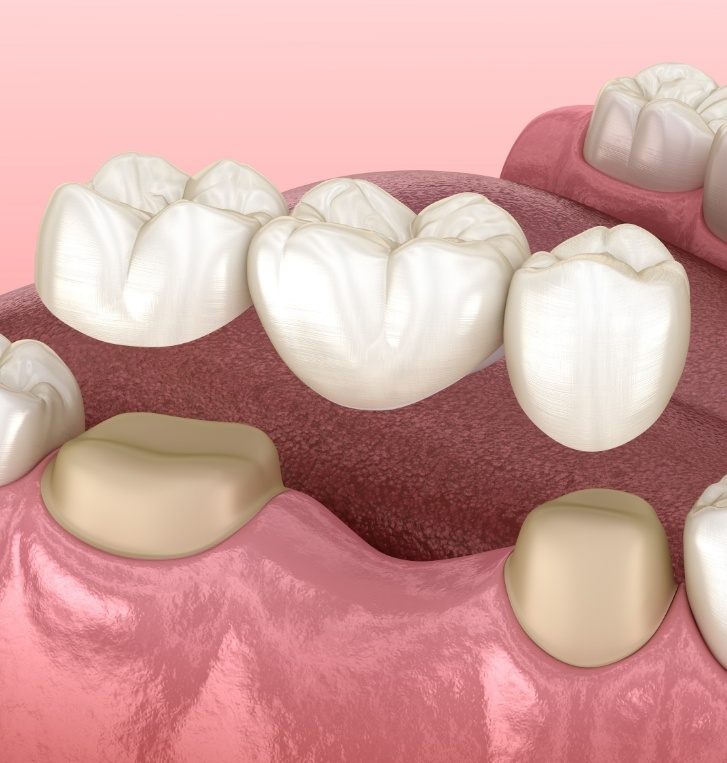
If you’re struggling with tooth loss, you aren’t the only one. About 140 million Americans are missing one or multiple pearly whites. While there are multiple tooth-replacement options to choose from, you might consider getting a dental bridge if you’re missing one tooth or several in a row. With this reliable restoration, you won’t have to suffer the consequences on your bite, speech, and grin in the long run. Read on to learn what to expect from a dental bridge in Hillsboro or give our team a call today to schedule your initial consultation.
Why Choose Wolfe Dental Hillsboro for Replacing Missing Teeth?
- Professional, Friendly, & Dedicated Dental Staff
- Durable & Natural-Looking Dental Materials
- In-Network With Multiple Dental Insurance Providers
What Is a Dental Bridge?
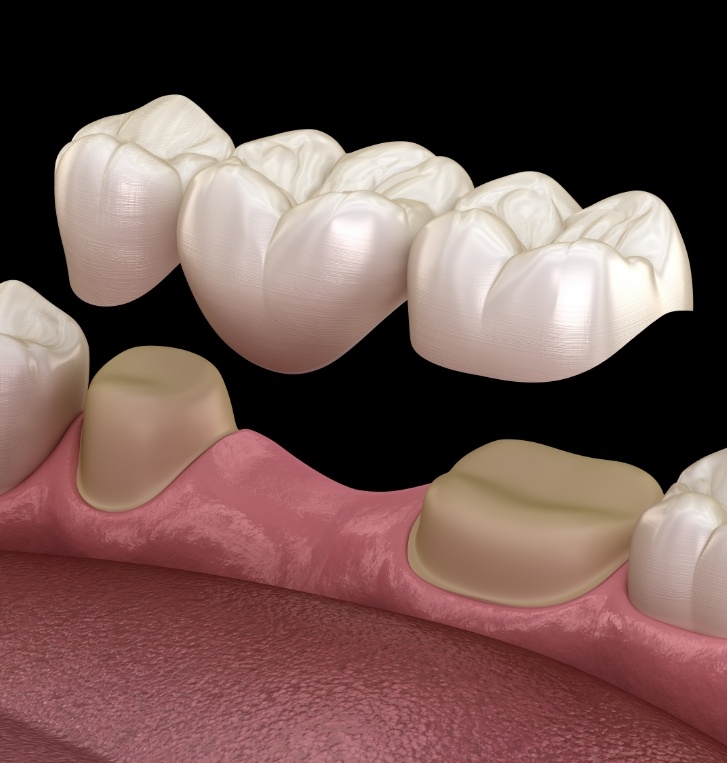
A dental bridge is one of the most reliable tooth replacement options for renewing one or multiple consecutively missing teeth. This restoration typically consists of two crowns and a number of pontics that help bridge the gap in your smile. While this treatment isn’t considered a permanent solution, you can typically expect the results to last several years before needing to replace it!
Types of Dental Bridges
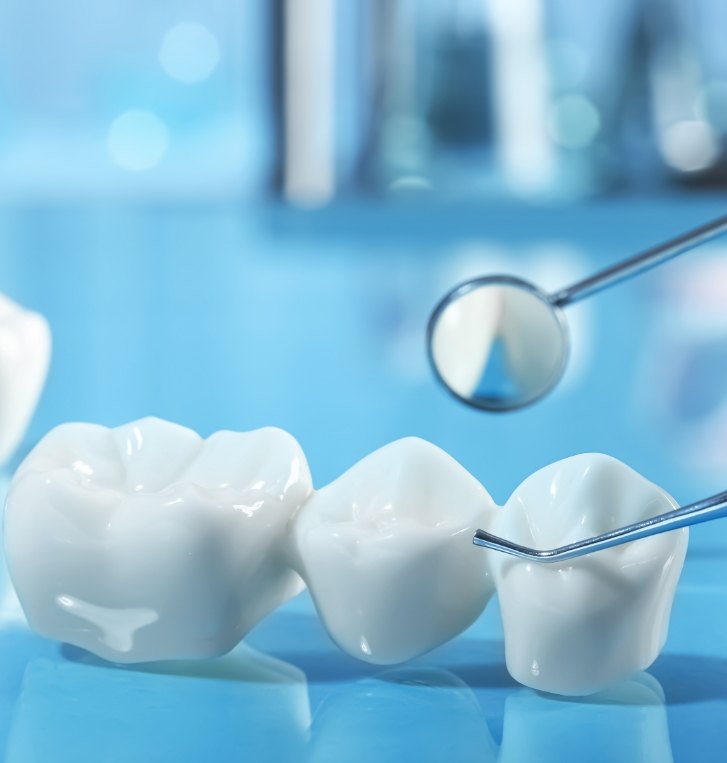
If you need to replace several missing teeth in a row, you’ll want to schedule a consultation with our team first. By assessing your situation and reviewing your dental history/lifestyle, we can determine the best kind of dental bridge for your smile. These may include:
Traditional Dental Bridge
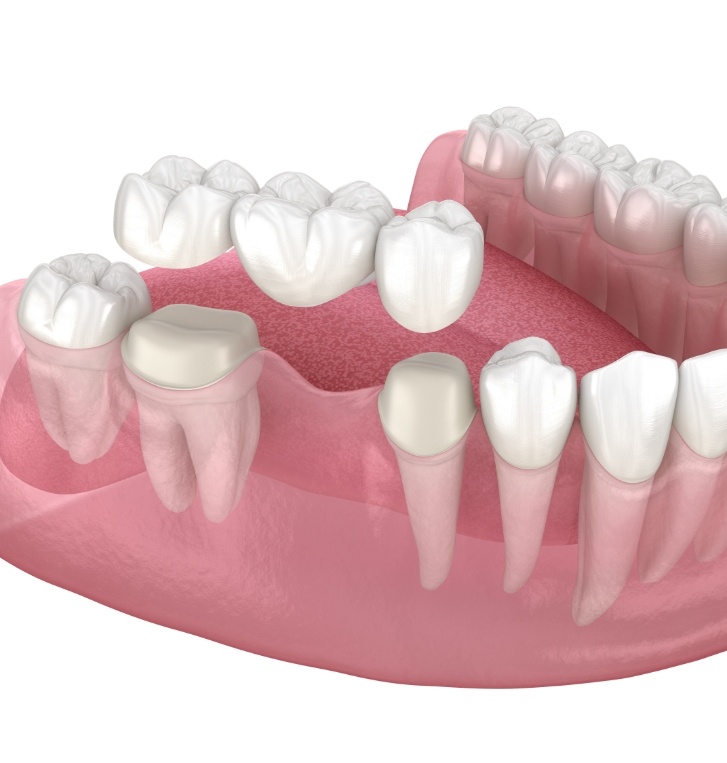
A regular (traditional) dental bridge is designed to close gaps made from missing multiple teeth consecutively. The two dental crowns on either side of the restoration will be anchored to your nearby healthy teeth. The pontics will then rest atop your gums for support. This procedure normally requires preparing these abutment teeth, but you’ll be able to enjoy your complete smile again in no time!
Implant Bridge
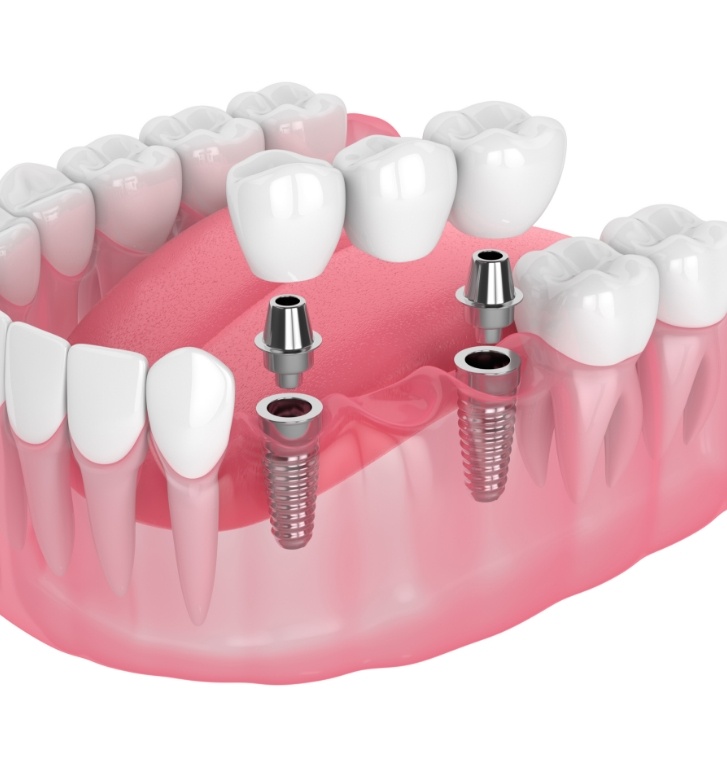
Unlike traditional ones, implant bridges rely on titanium posts that are directly embedded into your jawbone. This means they won’t have to rely on your natural teeth or gums to provide the stable foundation your brand-new pearly whites need. Furthermore, since the implants are biocompatible with your bone tissue, you can expect your bridge to last several decades with proper care.
The Benefits of Getting a Dental Bridge

It’s easy to see how dental bridges are one of the most sought-after tooth-replacement solutions. You can expect to enjoy various essential benefits, including:
- Improve your oral hygiene routine by making brushing/flossing easier.
- Maintain the placement of your remaining natural teeth.
- A durable and lifelike restoration that seamlessly blends with the rest of your smile.
- Preserve a stronger jawbone (with an implant bridge).
- Results that can last 20 years or more with proper care.
Dental Bridge FAQs
Is Getting a Dental Bridge Painful?
Like most dental procedures, our team will ensure that your mouth is completely numb with a local anesthetic before working on your smile. We may even offer you sedation dentistry to both keep you relaxed and reduce your ability to register pain. Though you shouldn’t feel much discomfort during the process itself, it’s natural to feel mild sensitivity for some time after your appointment. This is usually short-lived, however, and can easily be managed by taking over-the-counter pain relievers. But if any pain persists or worsens over time, don’t hesitate to notify us right away for help. Additionally, dental bridges help prevent adjacent teeth from moving out of place, allowing you to avoid discomfort caused by dental drift.
Do Dental Bridges Feel Natural?
Your dental bridge will be constructed specifically based on the impressions we take of your smile. This means that within a few days of having it placed, it should begin feeling significantly more natural with the rest of your teeth. While these restorations are made out of durable zirconia to withstand the excessive pressure from chewing, the material will also mimic the shine and smoothness of your tooth enamel. Your dentist will also reshape your abutment teeth to make sure your bridge seamlessly blends with your other pearly whites. In the end, your brand-new teeth shouldn’t feel noticeable.
Can You Take a Dental Bridge Out?
Although you’ll eventually need to get your dental bridge replaced, you should not be able to remove them from your mouth on your own. These restorations are designed to be sturdy and stay put in your smile for many years after being fitted. The only one who can take them out for adjustments or replacements is a qualified dentist. Unfortunately, some healthcare providers refer to partial dentures as “removable bridges.” But these two treatments shouldn’t be confused with each other. While partials can be removed by the patient at any time, bridges are not.
How Many Teeth Can a Dental Bridge Replace?
The number of teeth that can be restored with a dental bridge will depend on each patient’s specific needs. Generally speaking, a bridge can replace about one to four missing pearly whites in a row. Even so, for most people, this restoration option is usually utilized to help renew one or two teeth. This is because the longer a bridge extends across your smile, the less stability it’ll have in the long run. For this reason, the natural abutment teeth supporting your bridge must be healthy and strong. You can significantly lower your risk with implant bridges, as they’ll be directly anchored to your jawbone for optimal stability.
